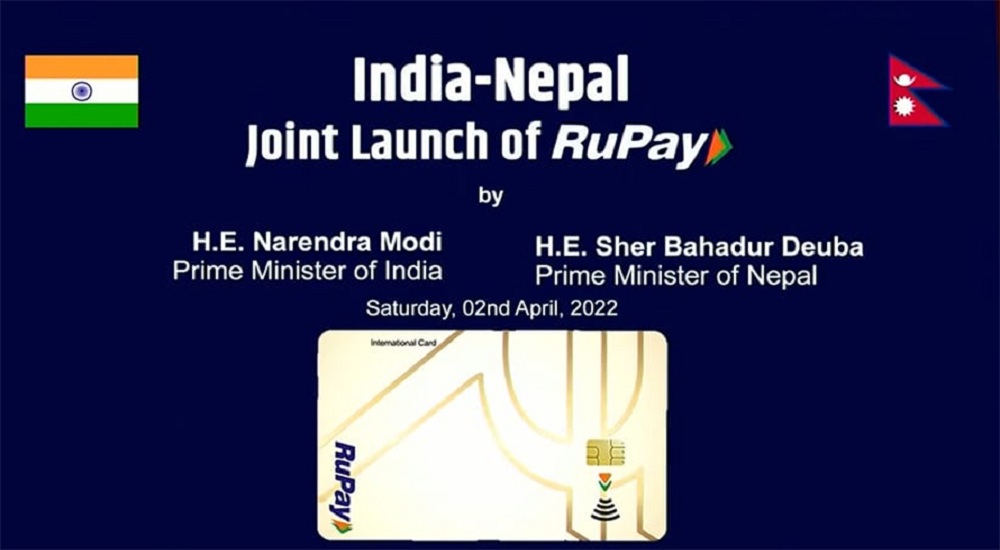India’s RuPay Launched in Nepal. During his 3-days official visit to India, Nepali Prime Minister Sher Bahadur Deuba and his counterpart, Indian Prime Minister Narendra Modi jointly launched India’s popular online payment system in Nepal.
RuPay is the product of the National Payments Corporation of India (NPCI). Launched widely in 2014, the online payment system aims to make India a part of a global payments market.
RuPay’s launch in Nepal is one milestone for the system that seeks to widen its services beyond the borders.
Likewise, India’s Foreign Secretary Harsh Vardhan Shringla said that the launch of RuPay in Nepal is a “significant move”. This will contribute to “enhancing the financial linkage” between the two close neighbors.
RuPay is launched by NPCI and regulated by the Reserve Bank of India. Indian consumers can use RuPay at ATMs, and POS machines. People can also use it to pay for online shopping.
Also read: Cross-Border Transactions Soon, Revolutionary UPI coming to Nepal
RuPay launches in Nepal, what to expect?
In the growing environment of cross-border payment systems between the two countries, RuPay will add another dimension. Once in operation, Nepali banks can also integrate RuPay into their systems. Nepali was also the first country to bring India’s Unified Payment Interface (UPI) system to Nepal.
Nepali banks and financial institutions (B/FIs) can implement RuPay like Visa and Mastercard. Besides, We will be able to use RuPay for transactions.
India’s prominent banks have issued RuPay debit cards. Further, bank accounts opened as part of PM Modi’s Jan-Dhan initiative have all got a RuPay debit card to promote financial inclusivity.
Don’t miss: Inter-Wallet Transfer Soon as NRB Calls for Interoperability
India issues RuPay cards with two different transaction thresholds. This one has a limit of INR.10,000 and the other INR.50,000. To encourage the use of this digital payment, the 5 transactions every month incurs no charge on the users.
RuPay for online shopping
RuPay was launched in India to compete with international payment cards such as Visa and Mastercard. It has seen incremental growth after Indian PM Narendra Modi’s Jan-Dhan Plan allowed cost-free RuPay debit card issuance. Like popular foreign cards, RuPay is accepted at any ATMs in India and people can easily use it to pay for online shopping.
The good thing is, that users of RuPay cardholders do not need to visit their banks to activate the service. They can register and activate the service while making their first payment online.
Once it enters Nepal, we can expect similar benefits. ATMs and eCommerce sites can add another payment mode in RuPay for Nepali consumers. For Cross-Border payments, RuPay will be another ensemble to Nepal’s growing reliance on digital payment systems.
What do you think of the RuPay launch in Nepal? Will it be another option for your payment mode? Do leave your remark in the comments below.













